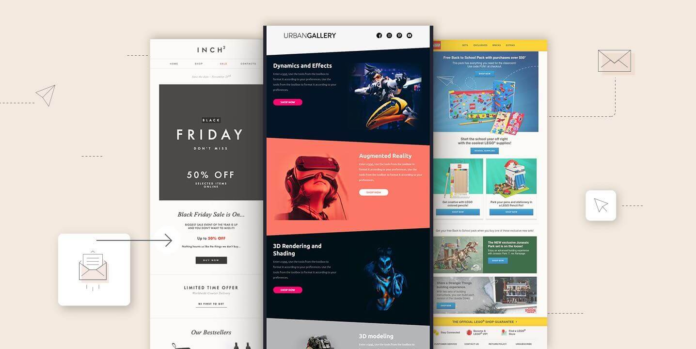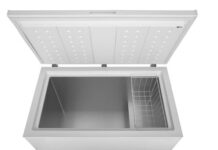Discover the top tips to maximize the performance of your newsletter and see how they can generate substantial profits for your business.
With the rise of technology, commercial content has found its way into the lives of potential shoppers through numerous ad platforms. Yet, despite the emergence of brand-new ad practices like Facebook Ads or Google Ads, sending an email newsletter is still considered a conventional yet highly effective approach to improve your business performance.
If you are curious about how, let’s look at the top nine tactics to optimize your newsletter and make sure it can generate significant revenue.
What Is An Email Newsletter?
Email newsletters refer to an electronic article concerning the latest activities of a specific business or organization. Typically, an email newsletter is automatically sent to any subscriber on a fixed basis, like weekly or monthly. While it was initially intended for informing purposes alone, most online sellers take advantage of this publication and heavily commercialize it.
Now, within a newsletter, you can find how-to videos and tutorials on products offered by the sender. Other common types of content include detailed descriptions of the latest best-seller, tips, and tricks related to the newly made purchase of the receiver, or urgent reminders of an upcoming sale campaign.
How To Optimize An Email Newsletter (9 Methods)
1. Write an enticing subject line
Each email user only spends a few seconds before deciding whether they should open your newsletter or not. Therefore, grab their attention right away with a short, concise, and provoking title that piques their curiosity. For example, customers are more likely to browse through an email entitled “11 simplest dishes to cook with an air fryer” than something that says “Have you bought a new air fryer recently? Do you want to know how it is used?”
2. Make use of the preview
Sometimes, a subject line alone is not enough to convey your message and persuade customers to give it a try. This is when a preview steps in. A standard email preview allows roughly 50 words, so make sure you optimize this feature by giving a quick summary of what your newsletter is about, which content is awaiting, or how it can create a difference for the receivers.
3. Create a balance between ad copy and visual
Ad copy is the number of text blocks in a newsletter. While it is natural for you to insert as much information as possible in an email, dense texts reduce the level of readability and are off-putting for potential shoppers. Surely no one wants to scan through pages and pages of words, however interesting these could be.
Lucky for you, this problem can easily be solved with images and videos. An illustration here and then can soothe the eyes and appeal to customers’ aesthetic sense, making them more tolerant towards your ads. Even better, a combination of captivating copy and mesmerizing photos can keep the users engaged for a long time, thus effectively raising the clickthrough rate and reinforcing your brand recognition.
If you do not know where to start, let’s look at this newsletter design.
4. Use third-party services
Basic email services can only go so far as to send the emails for you. If you want to beautify a layout, track down relevant metrics, and evaluate the performance of your newsletters, try out a platform like Drip, Mailchimp, or Constant Contact. Not only does it enable you to send thousands of emails at the same time, but they also gather the statistics related to each email and compile a full report.
5. Personalize each email
Newsletters are often considered intrusive and spam if their content does not sound relatable to the receivers. As a result, appealing to the receiving end personally guarantees to waive any hostile feelings and foster a bond between the business and the customer.
The easiest way is to call the customers by their real name, refer to their interests and hobbies, emphasize their professions, or narrow down the geographical location. Most of these details are already provided through the initial submission form. All you have to do is ensure such valuable insights do not go to waste.
6. Include a call-to-action (CTA)
At the end of the day, the ultimate goal of a newsletter is to generate a clickthrough. And what encourages a clickthrough better than a call-to-action button?
You might be tempted to put in many CTAs at different parts of your email. However, they can be counteracting, as customers would lose the flow and get easily distracted. So instead, place only two CTAs, one at the top and one at the bottom. Make them outstanding with bold colors and visually impressive designs.
7. Offer exclusive deals
Customers always want to feel valued and well taken care of by the brand. Email newsletters are the perfect opportunity for you to strengthen this sentiment. You can keep shoppers engaged and interested in your products by putting in promotion codes, free shipping codes, or early announcements of sale campaigns. Needless to say, they would be more than happy to revisit your listings and enjoy the special treatment.
8. Utilize the interface for best viewing on mobiles
Research from 99firms points out that 85% of email users check their accounts on a mobile phone. Therefore, it is vital that you design and create content that pops up nicely on a mobile screen. Take advantage of the large typeface for highly visible texts, wrap everything in a single column for effortless scrolling, and insert a call-to-action that can be tapped using one finger.
9. Send the email newsletter at the right time
When to send the email newsletter plays a huge role in deciding whether it gets opened or not. For example, many people have the habit of checking emails in the morning, so anytime between 8-9 am would be ideal.
Conclusion
Now that you have understood the importance of newsletters, it is time to apply this approach to your business. For further information and customized advice that fits your marketing goals, feel free to visit website!











